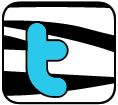It is officially spring break and once we get back to school, we will be in full
test prep mode. I think it is fair to say it is the most dreaded time of year for teachers and students. For the past three years, I have worked with Tier 3 students as a reading interventionist. Most of these students absolutely hate reading and they always tell me it is because they don't know how to read the words. I teach them explicit decoding and syllable strategies until they are automatically decoding multisyllabic words independently. Then we focus on
summarization and
how to write a good summary. You can visit my TpT store
and purchase the anchor charts and graphic organizers I use with my students. All of my students are successful and all of my students begin to enjoy reading!
Why Writing an Effective Summary is Important
Summarization is such an important, yet difficult skill for students. When students are able to effectively summarize, they retain information for longer. I tell my students all the time that if they can really understand what they are reading, they can answer any test question that is thrown their way.
Engaging Test Prep Passages
Now, in order to effectively teach students how to summarize, they must be engaged with the text they are reading. This is a little more challenging when they are reading test prep passages, but I am so excited to have found some awesome passages this year! My students absolutely love the stories and literally beg to stay and finish if we run out of time. The key to success is getting them
hooked on reading!
This is a free resource and all you have to do is create an account. After that, you are able to access a variety of test prep passages on a variety of different levels. The passages are typically three pages long and have 20 questions. Some of my students favorite passages are The Great Bake Off, The Ocean Adventure, and The Dare. I always give my students a little bit of background about the story before they begin reading and I always make sure we stop on Day 1 at a cliffhanger portion of the story.
How I Teach my Tier 3 Struggling Readers to Summarize
After I have my students excited about the story, we start reading. I always have predetermined stopping points and we always discuss the text at each stopping point. Students have a summary anchor chart that is displayed in my room to help them and we always glue a smaller copy of the anchor chart into our reading notebooks.
At stopping points, we discuss the different story elements such as Who is this story mostly about? Where and when does this story take place? What does the main character want to do or accomplish? What is the problem? How does the character try to solve the problem? How is the problem solved? How does the story end?
We also dig deeper into the text and talk about how the characters are feeling and what words and phrases the author uses to show this. Usually during these discussions, the students will ask what certain words or phrases mean and we get into context clues and figurative language.
After we have orally discussed the text and what was read, students orally summarize that section. For example, This story is mostly about a family of Silkworms that travel every weekend in a magical cocoon. This weekend, the Silkworms want to travel to an underwater coral reef. They are amazed at the things they see when they get there, but they encounter a Great White shark! The shark is coming after them and they are scared. Dad tries to get the magical cocoon home but it won't work because some fish have destroyed it. They hide in a cave and just as the shark is about to attack them, the cocoon whisks them away back home. After they get home they relax and beginning unpacking and fixing their magical cocoon for their next adventure.
Finally, after we have orally summarized in complete sentences, students use a graphic organizer to write their summary. Once students are familiar with the summary process, they use notebook paper to summarize and they are expected to summarize each selection they read during test taking. Visit my TpT Store where you can purchase the anchor charts and graphic organizers I use with my students.
Tier 3 Struggling Readers State Test Results
Every year, my school makes full accreditation. I have been using my summarization instruction and strategies for the past 2 years. Last year, we were able to meet our targets with our SPED population for the first time. Students that had not previously passed state exams were successful!
Most importantly,
students feel confident about their reading and are
engaged in their reading!

























